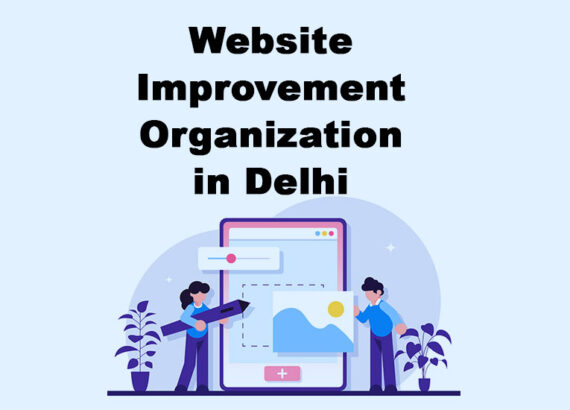Common Mistakes to Avoid in Website Development: Tips for Freshers
Website development is a dynamic and ever-evolving field that demands attention to detail and adherence to best practices. However, even for freshers in the industry, aspiring to build user-friendly and visually appealing websites, it is essential to be aware of the common mistakes that can hinder the success of their projects.
This article aims to shed light on some of these pitfalls and provide valuable tips to avoid them. By understanding and addressing these mistakes, newcomers to website development can enhance their skills, deliver better websites, and ensure a positive user experience. So, let’s dive into the world of website development and discover the key mistakes to avoid as a fresher in the field.
Avoid these common mistakes in website development to ensure a smooth and successful process. Learn how to optimize your site for better user experience, avoid technical errors, and create a visually appealing design. Don’t let these pitfalls hinder your website’s potential – follow our expert tips and tricks for a flawless development journey.
1. Introduction to common mistakes in website development
Understanding the importance of avoiding mistakes
Website development can be an exciting and rewarding field, but it’s not without its pitfalls. As a fresher in the industry, it’s important to be aware of common mistakes that can hinder your success. By avoiding these blunders, you can build better websites, impress clients, and stand out from the competition. So, let’s dive into some key mistakes to steer clear of and ensure your website development journey is a smooth one.
2. Lack of planning and research
Skipping market and target audience research
In website development, failing to plan is planning to fail. Many beginners make the mistake of diving straight into coding without a clear roadmap. It’s crucial to define your goals and objectives before you even open your code editor. Ask yourself: What is the purpose of the website? Who is the target audience? What functionality should it have? Without answering these questions, you risk creating a website that lacks direction and fails to deliver value.
Additionally, don’t forget the importance of market and target audience research. Understanding your users’ needs, preferences, and behaviour is essential for designing a website that resonates with them. By skipping this step, you might end up with a website that misses the mark and fails to engage your intended audience.

3. Ignoring user experience and usability
Importance of intuitive navigation
User experience (UX) should be at the forefront of every website developer’s mind. Ignoring this aspect is like opening a fancy restaurant with delicious food but forgetting to put up signs or have a menu. One key aspect of good UX is intuitive navigation. Avoid complex menus, confusing layouts, and hidden information. Remember, a frustrated user is a user who will leave your website.
Another crucial aspect of UX is mobile responsiveness. In the age of smartphones and tablets, people are using various devices to access the web. Neglecting mobile optimization means alienating a significant portion of your audience. Always prioritize creating websites that look and function seamlessly across different screen sizes. Don’t let your website be the one that makes users pinch, scroll, and zoom to view content – it’s a one-way ticket to a high bounce rate.
4. Inadequate mobile optimization
Understanding the mobile-first approach
Speaking of mobile optimization, it’s not just about responsiveness. The mobile-first approach has gained immense importance in recent years. It involves designing websites primarily for mobile devices, ensuring a smooth and enjoyable experience for mobile users. With more people accessing websites via their smartphones, it’s crucial to prioritize mobile optimization from the start.
Some common mobile optimization mistakes include using large image files that slow down loading time, overcrowding the screen with too much content, and neglecting touch-friendly elements. By understanding and avoiding these pitfalls, you can create websites that are a joy to use on any device.
Remember, website development is a continuous learning process. Embrace your mistakes, learn from them, and keep improving. By avoiding these common blunders, you’ll be well on your way to becoming a successful website developer. Happy coding!
5. Poor content organization and structure
Importance of clear and logical information architecture
When it comes to website development, organization is key. Nothing is worse than visiting a website and feeling completely lost. That’s why having a clear and logical information architecture is crucial. Think of it as the blueprint for your website – it helps users navigate through your content easily and find exactly what they’re looking for.
Avoid the temptation to throw all your content onto a single page and call it a day. Instead, break it up into logical sections and create a hierarchical structure. Use headings, subheadings, and bullet points to make it visually appealing and easy to skim. Remember, people have short attention spans, so make it easy for them to find what they need quickly.
Avoiding clutter and excessive content
We get it, you have a lot to say about your business or topic. But that doesn’t mean you should cram every bit of information onto your website. Cluttered websites are overwhelming and drive users away.
Instead, focus on presenting your content concisely and engagingly. Use compelling headlines, descriptive subheadings, and engaging visuals to capture attention. Break up long paragraphs into shorter ones or use bullet points to make it easier to read.
Remember, less is more. Keep your content streamlined and only include what is necessary to convey your message effectively.
6. Overlooking website security measures
The significance of implementing proper security protocols
With hackers and cyber threats lurking around every corner, it’s crucial to implement proper security protocols to protect your website and its users.
Invest in a reputable SSL certificate to encrypt data transmission and ensure secure communication between your website and its visitors. Regularly update your software, plugins, and themes to patch any vulnerabilities that could be exploited by malicious actors.
Additionally, consider implementing strong password policies, enabling two-factor authentication, and regularly backing up your website’s data. Taking these security measures not only protects your website but also instils trust in your visitors.
Common security vulnerabilities to address
While it’s impossible to eliminate all security risks, being aware of common vulnerabilities can help you stay one step ahead of potential threats. SQL injection, cross-site scripting (XSS), and outdated software versions are some examples of security vulnerabilities that you should address.
Regularly monitor your website for suspicious activity and be proactive in addressing any potential weaknesses.
7. Neglecting website performance optimization
Importance of fast loading times
In a world where everyone craves instant gratification, slow-loading websites are a major turnoff. Users don’t have the patience to wait for a website to load, and they’ll quickly move on to your competitors if your site is sluggish.
Optimizing your website’s performance ensures fast loading times, keeping your visitors engaged and on your site longer. Compress images and use caching techniques to reduce load times. Minimize HTTP requests by combining scripts and stylesheets. Consider using content delivery networks (CDNs) to distribute your site’s content across various servers globally.
Remember, speed matters. A fast website not only improves user experience but also enhances your search engine ranking.
Optimizing images and minimizing HTTP requests
Images are an essential part of any website, but they can also slow it down if not optimized properly. Choose the appropriate file format (JPEG, PNG, or GIF) depending on the type of image.
Additionally, minimize the number of HTTP requests your website makes. Each request adds to the load time, so combine scripts and stylesheets whenever possible. Use resource minification techniques to remove unnecessary characters from your code, making it more efficient.
By optimizing your images and minimizing HTTP requests, you can significantly improve your website’s performance and user experience.
8. Failing to prioritize ongoing maintenance and updates
The importance of regular website maintenance
Once your website is up and running, it’s tempting to think that your work is done. However, neglecting regular website maintenance can lead to potential issues down the line.
Regularly check for broken links, update outdated content, and fix any bugs or errors that may arise. Monitor your website’s performance metrics and make necessary adjustments to ensure it continues to meet your goals.
Software updates and security patches are not to be ignored. They often include essential bug fixes, performance enhancements, and security improvements. Failing to install these updates can leave your website vulnerable to attacks.
Make it a habit to regularly check for updates for your CMS platform, themes, plugins, and any other software used on your website. Keep everything up to date to ensure a smooth and secure user experience.
By prioritizing ongoing maintenance and updates, you can ensure your website remains in top shape and continues to provide a positive experience for your visitors. In conclusion, by being aware of the common mistakes to avoid in website development, freshers can set themselves up for success in their projects.
By carefully planning and researching, prioritizing user experience and mobile optimization, organizing content effectively, implementing robust security measures, optimizing website performance, and maintaining regular updates, they can create websites that stand out in terms of functionality, user-friendliness, and security. By learning from these tips and avoiding these mistakes, freshers can embark on their website development journey with confidence, continually improving their skills and delivering exceptional results.
FAQ
1. Why is it important to avoid common mistakes in website development?
Avoiding common mistakes in website development is crucial to ensure the success of your projects. By avoiding these mistakes, you can create websites that offer a better user experience, are more secure, and perform optimally. These factors contribute to increased user engagement, improved search engine rankings, and ultimately, the success of your website.
2. How can I prioritize user experience in website development?
Prioritizing user experience involves creating intuitive navigation, ensuring mobile responsiveness, optimizing page load times, and organizing content in a logical and user-friendly manner. By focusing on these aspects, you can enhance the usability and satisfaction of your website visitors, resulting in a positive user experience.
3. What are some common security vulnerabilities to address in website development?
Some common security vulnerabilities to address in website development include cross-site scripting (XSS) attacks, SQL injection, weak password policies, and outdated software or plugins. Implementing proper security measures, such as using secure coding practices, regularly updating software, and securing user input, can help protect your website and sensitive user data.
4. How can I ensure ongoing maintenance and updates for my website?
To ensure ongoing maintenance and updates for your website, it is important to establish a regular maintenance schedule. This includes updating software, plugins, and themes, monitoring website performance, regularly backing up data, and implementing security patches. Additionally, staying informed about the latest trends and technologies in website development can help you keep your website up-to-date and relevant.
Thank you for reading 🙂
Get up to 70% Discount on Amazon (Buy Now)
If you want to build your website at an affordable price contact: www.nextr.in
Read this: Top 8 Apps Every Entrepreneur Needs


















